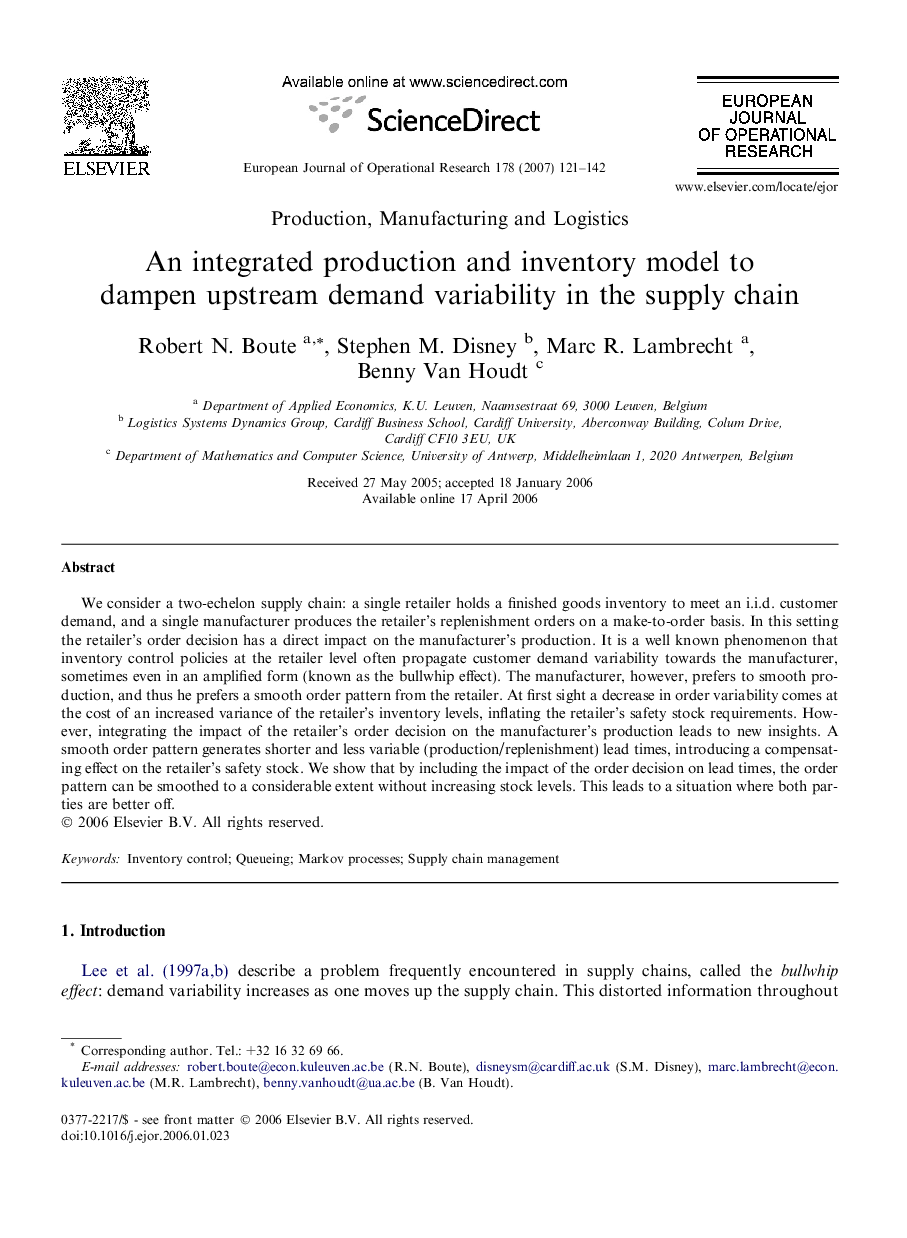| Article ID | Journal | Published Year | Pages | File Type |
|---|---|---|---|---|
| 479227 | European Journal of Operational Research | 2007 | 22 Pages |
We consider a two-echelon supply chain: a single retailer holds a finished goods inventory to meet an i.i.d. customer demand, and a single manufacturer produces the retailer’s replenishment orders on a make-to-order basis. In this setting the retailer’s order decision has a direct impact on the manufacturer’s production. It is a well known phenomenon that inventory control policies at the retailer level often propagate customer demand variability towards the manufacturer, sometimes even in an amplified form (known as the bullwhip effect). The manufacturer, however, prefers to smooth production, and thus he prefers a smooth order pattern from the retailer. At first sight a decrease in order variability comes at the cost of an increased variance of the retailer’s inventory levels, inflating the retailer’s safety stock requirements. However, integrating the impact of the retailer’s order decision on the manufacturer’s production leads to new insights. A smooth order pattern generates shorter and less variable (production/replenishment) lead times, introducing a compensating effect on the retailer’s safety stock. We show that by including the impact of the order decision on lead times, the order pattern can be smoothed to a considerable extent without increasing stock levels. This leads to a situation where both parties are better off.
